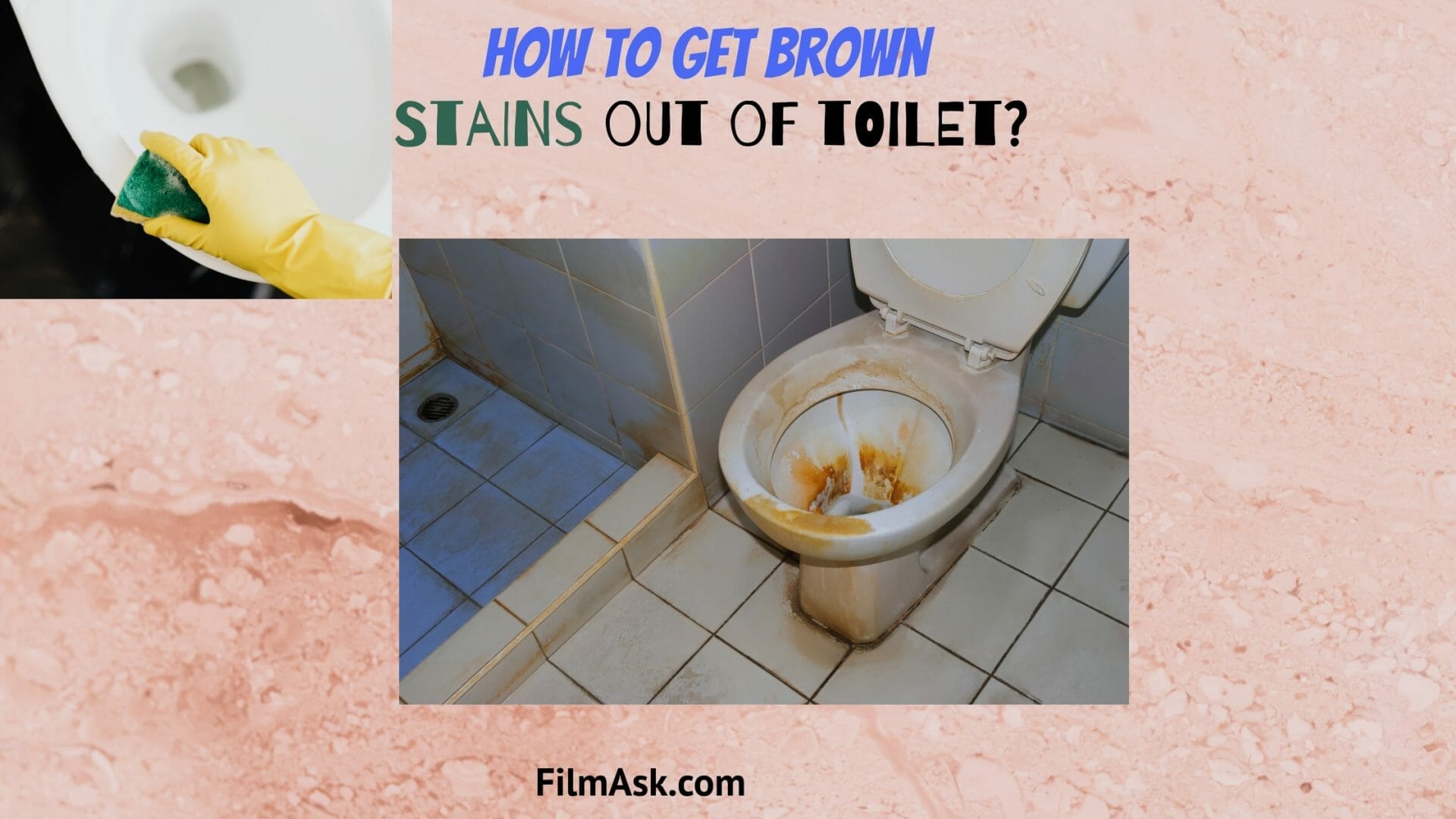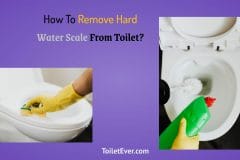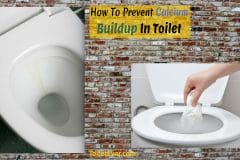
Do you know how to get brown stains out of toilet? If you don’t know, don’t worry. Just let me explain in detail for you.
Let’s go to dive into the main article to know the details.
The most effective way to get brown stains out of your toilet is to use a bleaching agent. Lemon juice, vinegar, and hydrogen peroxide are all good options. These substances will break down the food particles and bleach them away.
However, if you do not have any of these ingredients at home, you can also try adding half a cup of baking soda and 1 cup of white vinegar into the bowl before rinsing it off with hot water.
How To Remove Brown Stains From Toilet Bowl?
Stubborn brown stains are quite tough to remove from your stained toilet bowl. Good thing is that this problem can be fixed in just a few minutes.
Here are 3 steps to remove the brown staining of the toilet. Follow these steps:
Step# 01
Clean the bottom of the toilet bowl completely. The toilet may go back to normal once it finishes cleaning agent. But avoid using cleaners that will finish with sticky or white residue on your clean bathroom floor space.
Step# 02
Soak a cotton ball in hydrogen peroxide and use it to rub the stains liberally. Move from right to the left, bottom of bowl first then the top of the bowl until all yellow stain is gone. Do not use a scrubber that has more power since they tend toward breaking down the tank.
Step# 03
Rinse the bowl with hot water and scrub it thoroughly while squeezing out excess moisture with a dry towel. Wipe off clean, wipe if needed to remove stubborn stains on your toilet tank lid. Use some mild soap only after washing scented products like fragrant detergents or fresh flowers.
How To Remove Toilet Stains Using Baking Soda & Vinegar?
Trying to remove brown stains from the toilet bowl is not an easy task. If you are looking for a natural solution, try vinegar and baking soda. Filled with cleaning products ingredients. These two work extremely well to clean stains from the toilet.
These two elements also help prevent future stains and keep your bathroom sanitized for a longer period of time. Get started by mixing together one cup of bicarbonate soda and six cups of hot tap water, the solution should have a facial bubbling appearance.
Then, mix one tablespoon of regular white vinegar into the combined mixture. Stir it up carefully because you don’t want to accidentally cause an eruption that will leave your bathroom smelling like rotten eggs! Now allow the issue to soak in for around 15 minutes to an hour. Mixing it up for long periods might cause clumping of the baking soda, so you will need to continually stir during this time.
What is A Sandpaper?
Sandpaper is one of the best sanding tools that you can use to remove stubborn hard water stains from your toilet. You can sandpaper off any kind of stain with ease. But be careful not to scratch the surface. Sandpaper works by removing grime and grease using friction between sandpaper particles and its surroundings.
Scrub With Sandpaper
Brown stains on the toilet bowl are a common problem. While some people just want to cover it up. Others will take matters into their own hands and scrub away with sandpaper or steel wool. It’s not only unsanitary but also hard on your toilet seat and can cause scratches that can permanently damage your wood surface. Instead of sandpaper or steel wool, there are other ways you can use to remove brown stains from the bathroom without damaging it in any way. Since these less abrasive methods do not scratch the surface of your toilet. You can use them over and over again for years.
Borax and Vinegar
Borax and vinegar are two effective stain removers that can be used to get borax stains out of the toilet. Both borax and vinegar help remove borax stains from a variety of surfaces, including hardwood floors, tiles, porcelain sink tops and bathtubs. However, borax and vinegar are both acidic substances that can be damaging to your toilet. Therefore it is a good idea to test the stains first on a small area so you will know how much borax can damage your bathroom fixtures. Try one drop of each substance onto the stain and if the substance does not remove any borax stains and corrode your toilet, then you can move on to a full application. If it removes all of the stains and over time causes damage, then it is best that you don’t use these stain removers anymore. Because they may cause harm to your bathroom fixtures.
Cleaning Brown Toilet Stains from Rust
Rust stains are hard to remove from the toilet bowl. Especially if they have been there for a long time. Rust is formed by rusting iron in contact with water or oxygen. The rust can be removed from the surface of your toilet bowl with some simple household products like lemon juice and baking soda. But this will not get rid of the rust that has penetrated into the metal parts inside your toilet tank. To completely remove rust stains you need to use special chemicals that contain acid which will break down rust on contact while leaving all other surfaces intact. So to remove rust stains from toilets you would need to completely remove the rust using vinegar and lemon juice inside your toilet bowl.
Scrub With An Acidic Cleaner
If you want to remove brown stains from your toilet bowl, then make sure that it is completely clean before using any cleaner or scrubbing agent.
The best way to remove brown stains from a toilet bowl is by scrubbing with an acidic cleaner like lemon juice or vinegar. You can also use baking soda which will work well on hard water deposits and soap residue in the drain pipes but only if they have not dried up too much (if they are dry then no amount of cleaning product will do anything).
Conclusion
So hopefully you will understand now that there is a lot of truth behind what everyone has been saying about the removal of brown toilet bowl stains. In this case, it really does take lemon juice and vinegar to get rid of yellow-brown stains from your toilet bowl. You can go ahead and use pour a cup or so of lemon juice inside the toilet bowl. Scrub it around thoroughly with a toilet brush.



